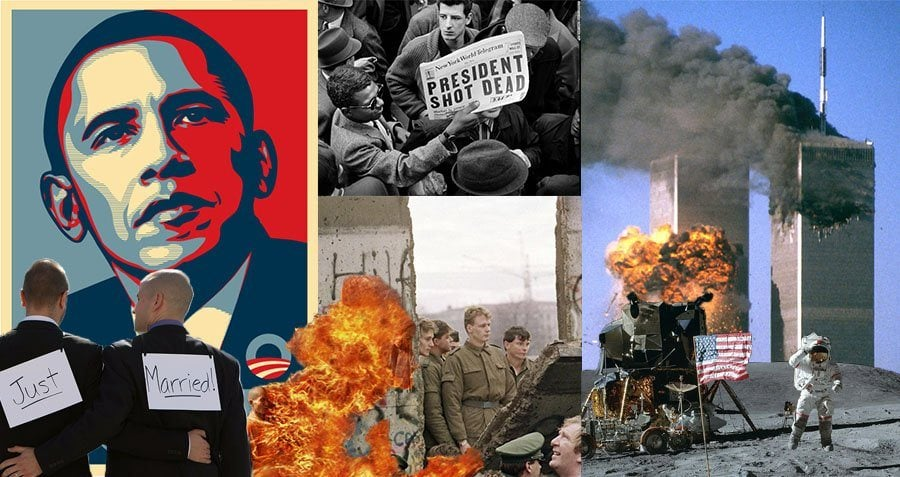Key moments in American history have shaped the country into what it is today. From gaining independence to fighting for civil rights and navigating the digital age, these events reflect the journey of a nation built on the ideas of freedom, opportunity, and resilience.
Let’s explore the most important moments that influenced modern America.
The Declaration of Independence (1776)
In 1776, the thirteen American colonies declared independence from British rule. The Declaration of Independence, adopted on July 4th, announced that the colonies were now free states.
This moment marked the beginning of the United States as a new nation. The declaration introduced powerful ideas like liberty, equality, and the right to self-government. These values became the foundation of American identity and democracy.

The U.S. Constitution Is Adopted (1787)
Eleven years after independence, the United States needed a stronger system of government. In 1787, the U.S. Constitution was written and became the law of the land.
The Constitution created a balanced federal government with three branches—executive, legislative, and judicial. It also led to the addition of the Bill of Rights, which protected individual freedoms like speech, religion, and the press.
The Constitution remains one of the most important documents in American history and continues to guide the nation today.
The Civil War and the End of Slavery (1861–1865)
The Civil War was one of the most difficult times in American history. It was fought between the northern states (the Union) and the southern states (the Confederacy), mainly over the issue of slavery.
The war ended in 1865 with a Union victory, and slavery was officially abolished through the 13th Amendment. This was a major turning point for the country and a step toward a more equal society, even though the struggle for civil rights would continue for many more years.
Women Gain the Right to Vote (1920)
After decades of activism, women in the United States finally won the right to vote in 1920 with the passing of the 19th Amendment.
This moment changed the political landscape forever, allowing women to take part in elections and influence public policy. It was also a key step in the larger movement for gender equality in America.
The Great Depression (1929)
In 1929, the stock market crashed, leading to the Great Depression—the worst economic crisis in U.S. history. Businesses closed, banks failed, and millions of people lost their jobs.
The country faced deep hardship, but it also led to major changes. President Franklin D. Roosevelt introduced the New Deal, a set of programs that helped rebuild the economy and gave the federal government a bigger role in supporting citizens.
World War II and America’s Rise (1941–1945)
The United States entered World War II in 1941 after the Japanese attack on Pearl Harbor. American soldiers and factories played a key role in defeating the Axis powers.
After the war, the U.S. became a global superpower. It had one of the strongest economies and military forces in the world. The war also led to the formation of the United Nations and a new focus on international leadership.
The Civil Rights Movement (1954–1968)
The civil rights movement was a major push to end racial segregation and injustice in America. It was led by powerful voices like Martin Luther King Jr., Rosa Parks, and many everyday citizens.
Key moments during this period included the Supreme Court decision in Brown v. Board of Education, which ended school segregation, and the passing of the Civil Rights Act of 1964 and the Voting Rights Act of 1965.
This movement helped move the nation closer to equality and changed how Americans thought about race and justice.
The Moon Landing (1969)
In 1969, American astronaut Neil Armstrong became the first person to walk on the moon. His famous words, “That’s one small step for man, one giant leap for mankind,” inspired millions around the world.
The moon landing was a major victory in the space race and showed what the country could achieve through science and technology. It remains one of America’s proudest moments.
The September 11 Attacks (2001)
On September 11, 2001, terrorist attacks in New York City and Washington, D.C., shocked the nation. Nearly 3,000 people lost their lives.
This tragic event had a lasting impact. It led to the War on Terror, the invasion of Afghanistan, and major changes in U.S. security and foreign policy. It also reshaped how Americans viewed safety, freedom, and global conflict.
The Election of Barack Obama (2008)
In 2008, Barack Obama was elected as the first African American president of the United States. His election was a historic milestone in the long struggle for racial equality.
Obama’s message of hope and change energized the nation during a time of financial crisis. His presidency inspired people across the world and showed that progress was possible in American democracy.

The COVID-19 Pandemic (2020)
The COVID-19 pandemic began in early 2020 and quickly changed everyday life. Lockdowns, school closures, and overwhelmed hospitals created one of the biggest health and social challenges in American history.
Millions of people lost loved ones and jobs. At the same time, the pandemic highlighted problems in healthcare, inequality, and public systems. It also sparked social movements, including renewed calls for racial justice after the death of George Floyd.
This period tested the strength of the nation and forced deep reflection on public health and human connection.
The Digital and Climate Age (2020s and Beyond)
Today, America is shaped by new challenges and opportunities. Technology like artificial intelligence is changing how we work, learn, and interact. Climate change is causing natural disasters and pushing for urgent environmental action.
Political divisions, global competition, and new social movements continue to define this era. These modern events are likely to become the next key moments in American history.
Conclusion
The story of the United States is filled with both struggle and achievement. Each key moment in American history has helped shape the country’s identity, values, and direction.
From the fight for independence to civil rights, from economic hardship to technological breakthroughs, these events remind us of the nation’s ability to grow, adapt, and push forward. By learning from the past, we can build a stronger and more united future.
Do Follow USA Glory On Instagram
Read Next – LGBTQ+ Rights Progress in the United States: Milestones & Challenges






